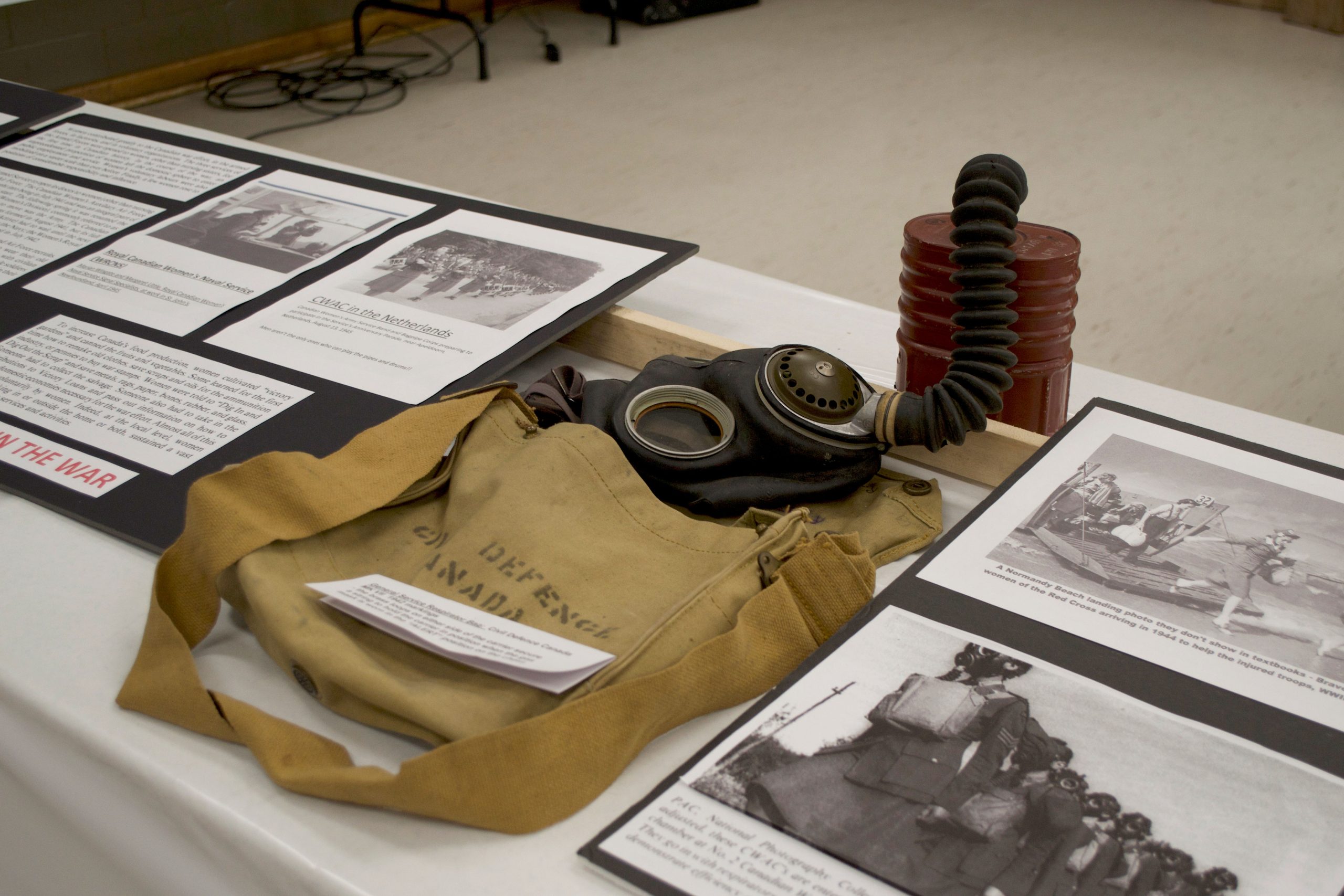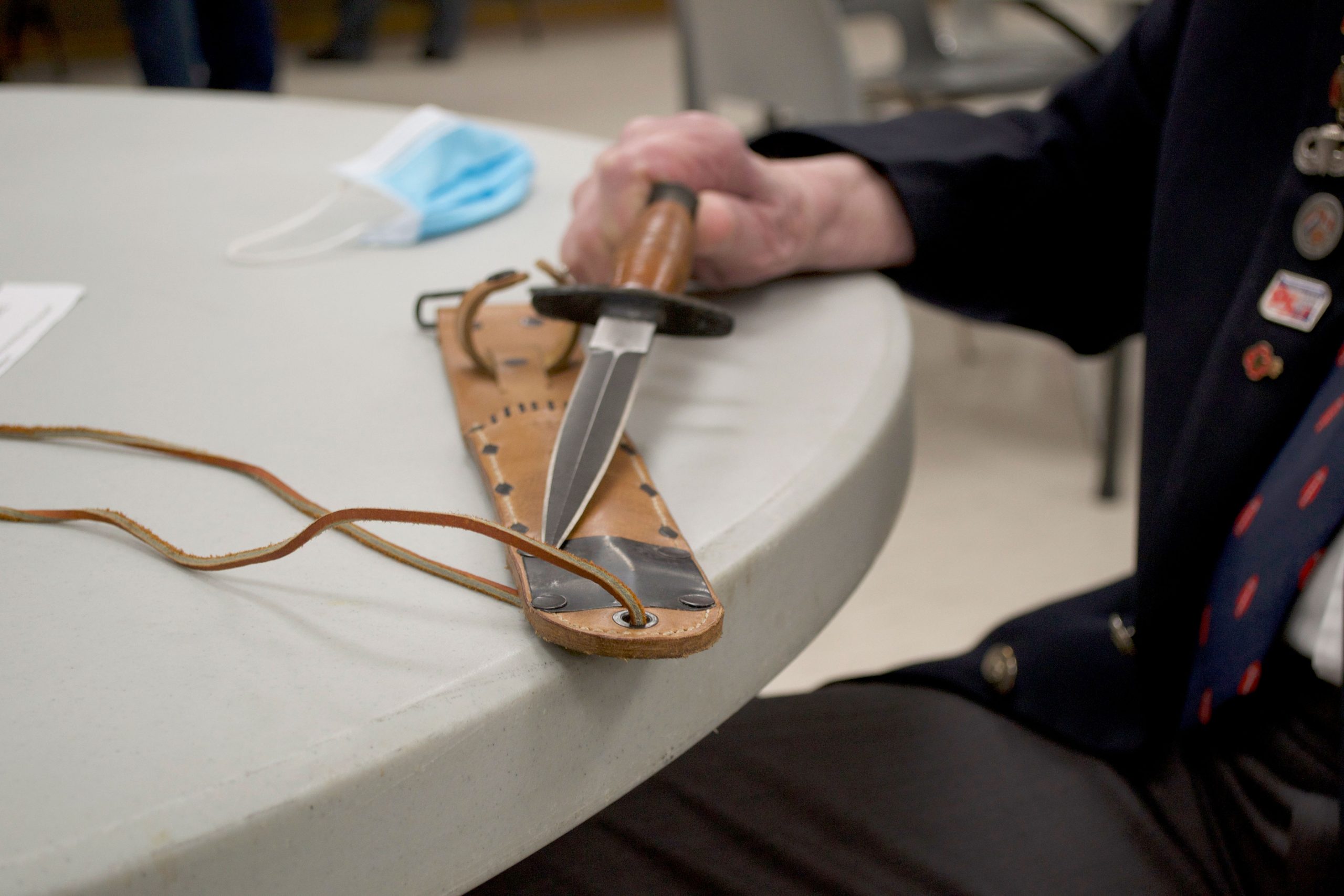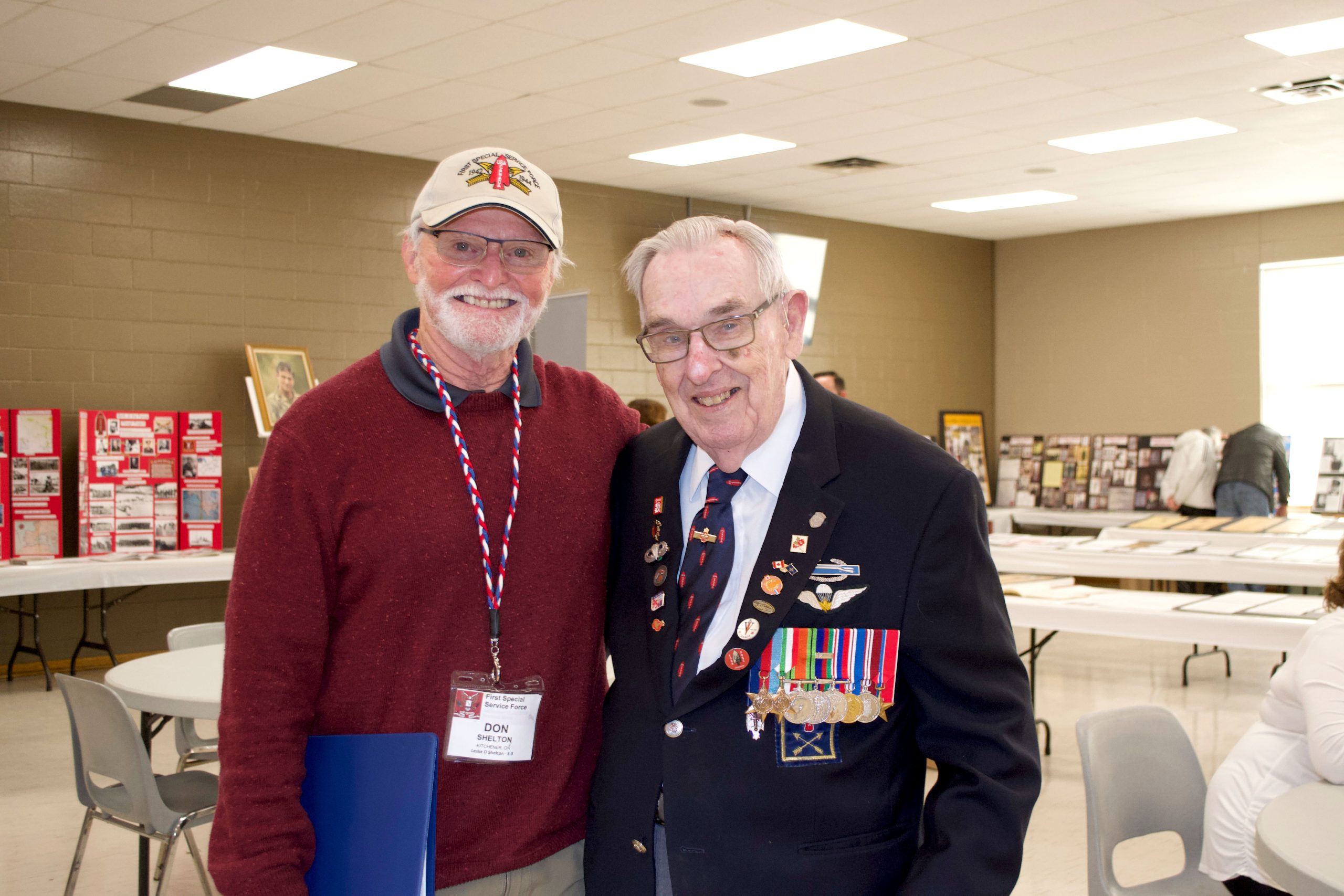HARRISTON – Residents from the community gathered together to commemorate the anniversary of the end of the Second World War, which included events officials say have often been forgotten in Canada’s military history.
Harriston Superior Monuments, in collaboration with Minto Culture Days, celebrated the 76th anniversary of the end of the Second World War at the Harriston Auditorium on Oct. 24.
The event included a multitude of exhibits showcasing Canadian history, featuring battles (including the history of connections to Wellington County), artifacts and soldiers.
In attendance was Jack Callowhill, original member of the “Devil’s Brigade,” also known as the First Special Service Force (FSSF) Association, a Canada-U.S., WWII commando unit which fought the Germans in a series of raids between 1942 and 1944.
Harriston Superior Monuments memorial counsellor John McVicar said he hopes people will take away “a little more education about the often-unheard-of aspects of the war.
“I’ve just had pretty much a lifelong disappointment that most Canadians do not know the huge achievements that the people in our military have earned and maybe as we come up to Remembrance Day this year, some of that will sink in,” said McVicar.
He added being able to put the event on after last year’s cancellation was “a dream come true” – and the timing of this year’s event worked in his favour, having only recently learned about Callowhill.
“To think, if I had put this on last year … I wouldn’t have known about Jack. I only heard about him last November,” McVicar said.
Callowhill, born in Hamilton and now residing in Stoney Creek, is one of three surviving Canadian members of the original FSSF and the only one from his regiment left alive.
“I didn’t have any idea what it was going to be all about, but I do enjoy things like this,” Callowhill said of the event. “Once in a while we go to some things like this, but not too often anymore.”
Callowhill, 98, said a lot of the artifacts and history presented at the event were familiar, bringing back memories of some of the items his father, who was a Highlander in the First World War, used to have.
“When you come to something like this, everybody talks to you fine, but it brings back memories and its unfortunately not nice memories,” Callowhill said of being the last living member of the regiment.
“We never talked about it – that was the point. We’re not supposed to talk about it, so people didn’t know and they didn’t know for a lot of years about the wars.”
Callowhill said although the FSSF was half American and half Canadian, they all lived together and worked together – “you wouldn’t know the difference.
“You miss the guys,” he added, “and the guy that got hurt the same time I did, I never did see him again,” Callowhill explained as he recalled when he was wounded during the Battle of Monte de la Difensa in Italy in 1943.
When asked what memories the history shown in the event brought back of his time during the war, Callowhill said they were mixed.
“Some of my memories are good, some are bad,” he explained.
“Mostly I think the memories come afterwards when you don’t find the people when you go to a reunion or something like this, you worry what happened because everything gets changed around.
“You don’t know anybody, so you try to find out and they don’t know who you’re talking about.”
Asked how it feels to serve his county, Callowhill said he doesn’t remember all the time – unless something happens.
“When you talk about the whole thing, if you get us sitting down, which we don’t very often, you see that the guys that did the intensive training that put their heart and soul into it had a better chance of living than the other ones.”

The event featured displays on WWII battles, artifacts and soldiers, including the history of connections to Wellington County.
First Special Service Force
Don Shelton, former president of the FSSFA, spoke of the history of the FSSF, drawing back to where the first members of the FSSF were trained in secret in Helena, Montana under the command of colonel Robert Frederick.
“There was no special blueprint for how to train commandos or special forces in that day, so he created that blueprint,” he explained.
“They were supposed to be going in for very dangerous missions, sabotage missions, behind-the-line missions, and so his idea … to keep them alive during their assignments was to make them the fittest men and the best trained men on the continent.”
Shelton explained members of the force were trained in all kinds of combat areas, including mountain climbing, winter warfare, martial arts, combat fighting and knife fighting.
A special knife was also developed for them, a V42 knife or the “killing knife,” and the colonel taught the service force how to use it.
“His motto was ‘I’m not here to teach you how to capture or to control someone, I’m here to show you how to kill someone,’” Shelton said.
He explained how during one of the battles, Callowhill, with his regiment, climbed up in the dark to a level where the Germans didn’t think they’d be coming.
There, they hid during the day and at night moved up and scaled the steepest side of the mountain and surprised the Germans, driving them off the mountain within a few hours.
“Then they went on to clear more and more mountains of Germans, but it was a tremendous toll,” he explained.
“Out of 1,800 men … there was only 400 who could actually fight,” he added. “Some were wounded, some had frostbite, some had trench foot.
“When you look back on this history, they realize how phenomenal they were and they are now considered the forefathers of the Canadian Special Operations Regiment and Joint Task Force 2, which are the most well-trained commandos we have in Canada.”
Tribute to local soldier
The event also saw a special display dedicated to local soldier Victor Innanen, born in Harriston, who enlisted in the army at the age of 15.
After a short while, it was discovered he was underage and he was sent home, but that didn’t deter him. He reenlisted under the surname “Coja,” his mother’s maiden name, and went on to join the army.
“(He) made it through a very strict selection process; they only wanted the toughest and fittest and most aggressive men that they thought would fit into this unit,” Shelton explained.
He was selected and went down to Helena, Montana and trained at Fort William Henry Harrison in the same regiment as Callowhill, although the two never crossed paths.
“The average age of the force was 22 years old, they’re all usually experienced soldiers which is what happens with special combat troops for commandos,” Shelton noted.
“Usually, you need to have a little bit of experience to take on that training, but he, at the age of 15, was training with grown men and succeeded.”
From there, Innanen became a staff sergeant at the age of 16 and was put in charge of other men, many much older than him, Shelton explained.
It was during the Battle of Monte de la Difensa that Innanen’s job was to carry up the supplies so the men on the top of the mountain could keep fighting and bring the wounded down.
“It was an eight-hour trip up and down and some of the guys worked 24 hours, made three trips up without sleep.
“Many of them fell victim to exhaustion. Victor came down with trench foot but as soon as he was finished that, back into the fray and into clearing other mountain tops,” he added.

Veteran Jack Callowhill holds a special knife – the V42 knife or the “killing knife” – developed for the First Special Service Force. Photos by Paige Peacock
Innanen made it through the Battle of Monte de la Difensa and in 1944, moved onto the Battle of Monte Majo.
It was during that battle that Innanen was killed by a sniper at the age of 17, the youngest member of the FSSF to be killed in action.
He was three months shy of his 18th birthday.
“So that’s why we’re here today, because he’s part of the first special force lineage and legacy,” Shelton explained of the event.
“It’s a very strong part of special forces history today and the First Special Service Force veterans like Jack Callowhill, they’re held in high regard by all of the (FSSFA) people today because they find it hard to believe that these men did what they did.
“Because in Canadian forces it might take you five years to get to that level and they did it in a year and a half,” he said.
“And so they set the stage, they set the standard for special forces in North America.”
Shelton explained the men that were in the FSSF came from all parts of Canada, especially from small towns.
“They wanted people who could take a hard life,” he said. “You had to be able to take hard conditions and have kind of an indomitable will, so they found those types of characters and Victor was one of them and Jack is another one.”
He added the FSSFA is dedicated to preserving the legacy of the first special service force and passing it on to the next generations.
“We honour our veterans and Jack is very special to us because he’s one of the very few force men now who can actually travel and walk around a room and talk to people.
“What he is here for is to honour the men who did not come back. Jack’s here to tell the story.”
Forgotten history
Shelton explained because FSSF was a small unit and kept secret, a lot of the documents about the FSSF didn’t come out until the mid 1960s or 70s.
“So for a while they were almost a forgotten regiment and a lot of people don’t know the significance of what these men accomplished and the standards that they set,” he said.
“And they need to be proud that Canadians stood up at this level and that we have that kind of commitment.”
Shelton said the FSSF is an important part of Canada’s military history but very few people know about it.
“We left a lot of Canadians buried in foreign soil, we want them to be remembered,” he noted.
“We need to acknowledge … that’s the price of freedom.
“The lifestyle we live today is often thanks to the men and women that stood up when it was necessary, and this group stood up big-time.
“They were well trained, well armed, and they had chutzpah, they had guts, they were determined. If anybody was going to take that objective, it would be them or they’d die doing it, that’s the kind of men they were.
“They were dangerous at every level, right down to the very last man.
“There’s still one man left, you still had to be careful because he would be dangerous, and that’s the same with special forces today, that’s the tradition that carries on.”




